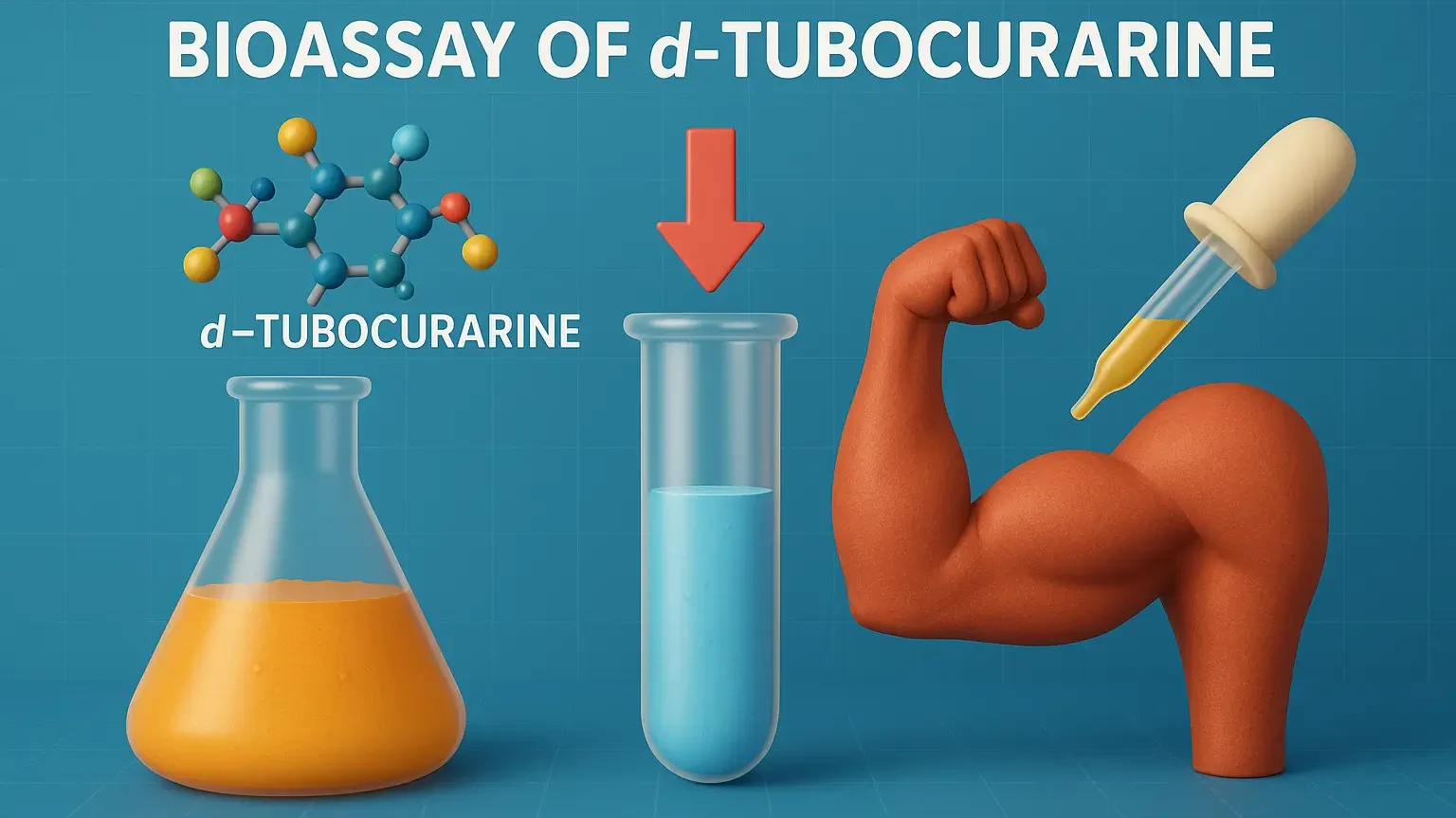- Bioassay of d-Tubocurarine (ADH): Commonly done using frog rectus abdominis muscle.
- Bioassay of d-Tubocurarine (ADH): Measures neuromuscular blockade to assess potency.
Principle of Bioassay of d-Tubocurarine
- d-Tubocurarine is a non-depolarizing neuromuscular blocker that prevents acetylcholine from activating nicotinic receptors at the neuromuscular junction.
- The bioassay measures loss of muscle contraction (e.g., twitch response) in response to nerve stimulation.
Methods
1. Frog Rectus Abdominis or Chick Biventer Cervicis Assay (In Vitro)
- Procedure:
- Mount the muscle in an organ bath, stimulate it electrically.
- Record the twitch height with standard d-tubocurarine added at increasing doses, then wash and repeat with test sample.
- Potency Determination: Compare the concentration needed to reduce the twitch by 50
2. Mammalian (e.g., Rat) Nerve-Muscle Preparation (In Vivo)
- Procedure:
- Anesthetize rat, stimulate the sciatic nerve, measure the twitch response of the gastrocnemius muscle.
- Administer standard and test preparations of d-tubocurarine in incremental doses, noting the blockade of muscle twitch.
- Potency Determination: Compare dose-response blockade curves.
Click Here to Watch the Best Pharma Videos

